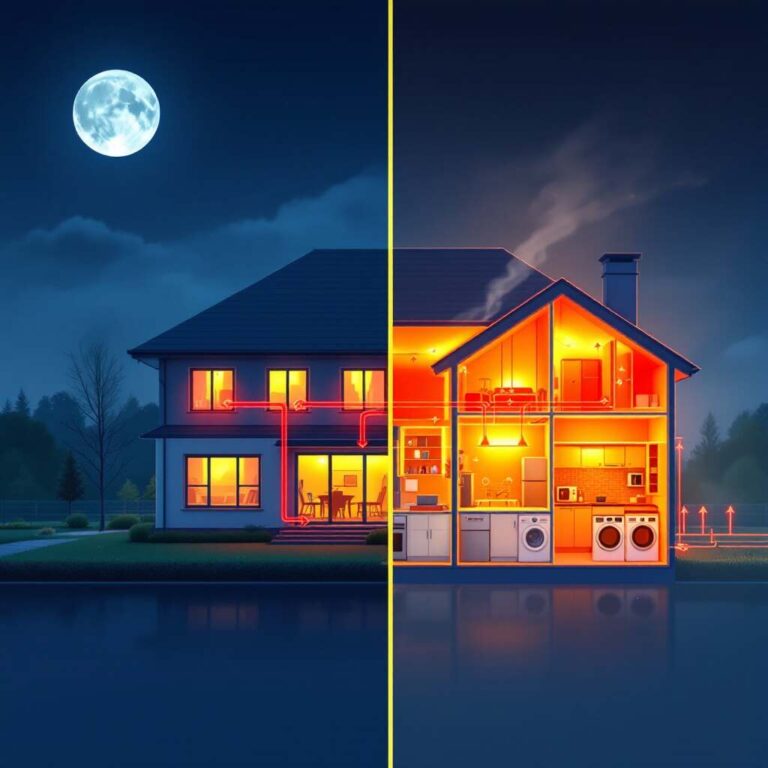Have you ever tossed and turned at night, wondering why your home feels unbearably hot even after sunset? If you ask yourself, “Why does my house get hot at night?” you’re not alone. Many people experience this frustrating phenomenon, especially during warmer months. A hot home at night disrupts sleep and increases energy costs as you try to cool it down.
Understanding the reasons behind nighttime heat buildup can help you take control of your indoor climate. By identifying the root causes of this issue, you can implement practical solutions to enjoy a cooler, more comfortable home—and even save on energy bills.
Understanding the Problem: Why Does My House Get Hot at Night?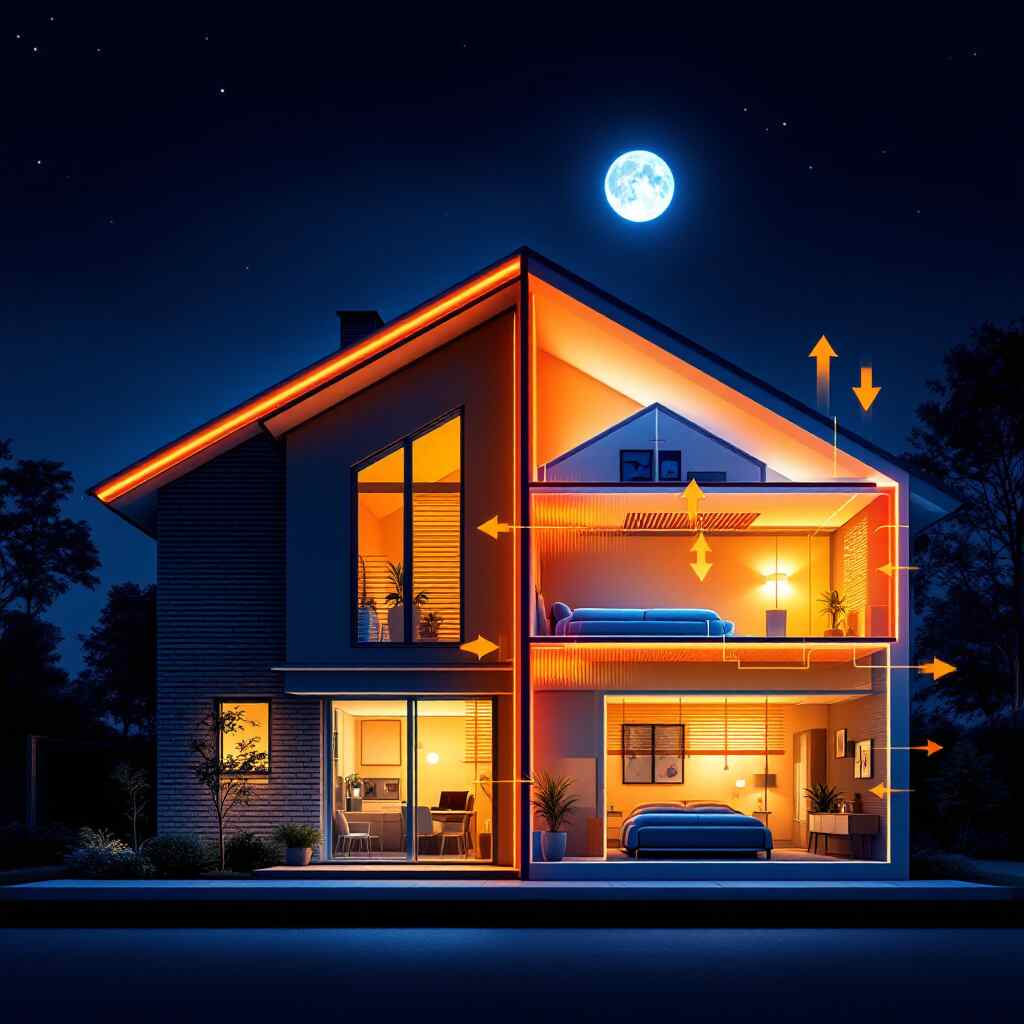
What Happens Inside Your Home at Night?
Even after sunset, many homes retain heat, making indoor spaces feel warmer than the outdoor temperature. This happens because buildings interact with heat during the day and release it at night. Poor insulation, heat-absorbing materials, and lack of ventilation contribute to the problem.
As a result, homes can feel stifling at night, leading to discomfort, higher electricity usage, and restless sleep. If you’ve ever wondered, “Why does my house get hot at night?” the answer lies in understanding how heat behaves and how your home is designed to retain or release it.
The Science Behind Nighttime Heat in Homes
To truly understand why your home gets hot at night, let’s break down some basic principles of heat transfer:
Heat Transfer: Conduction, Convection, and Radiation
- Conduction: Heat travels through materials like walls, roofs, and windows, warming your home.
- Convection: Warm air rises and gets trapped in certain areas, such as upper floors.
- Radiation: The sun’s rays heat surfaces like roofs and pavements, radiating heat into the air—even after dark.
Thermal Inertia
Thermal inertia refers to how building materials absorb and release heat. Materials like brick, concrete, and tile store heat during the day and release it slowly at night, causing your home to stay warm even after outdoor temperatures drop. This is why some homes cool down more slowly than others.
The Lag Between Outdoor and Indoor Cooling
Even if the air outside cools significantly after sunset, it might take hours for indoor spaces to follow suit. This temperature lag happens because your home’s structure has absorbed heat throughout the day and continues releasing it into the night.
Major Causes: Why Does My House Get Hot at Night?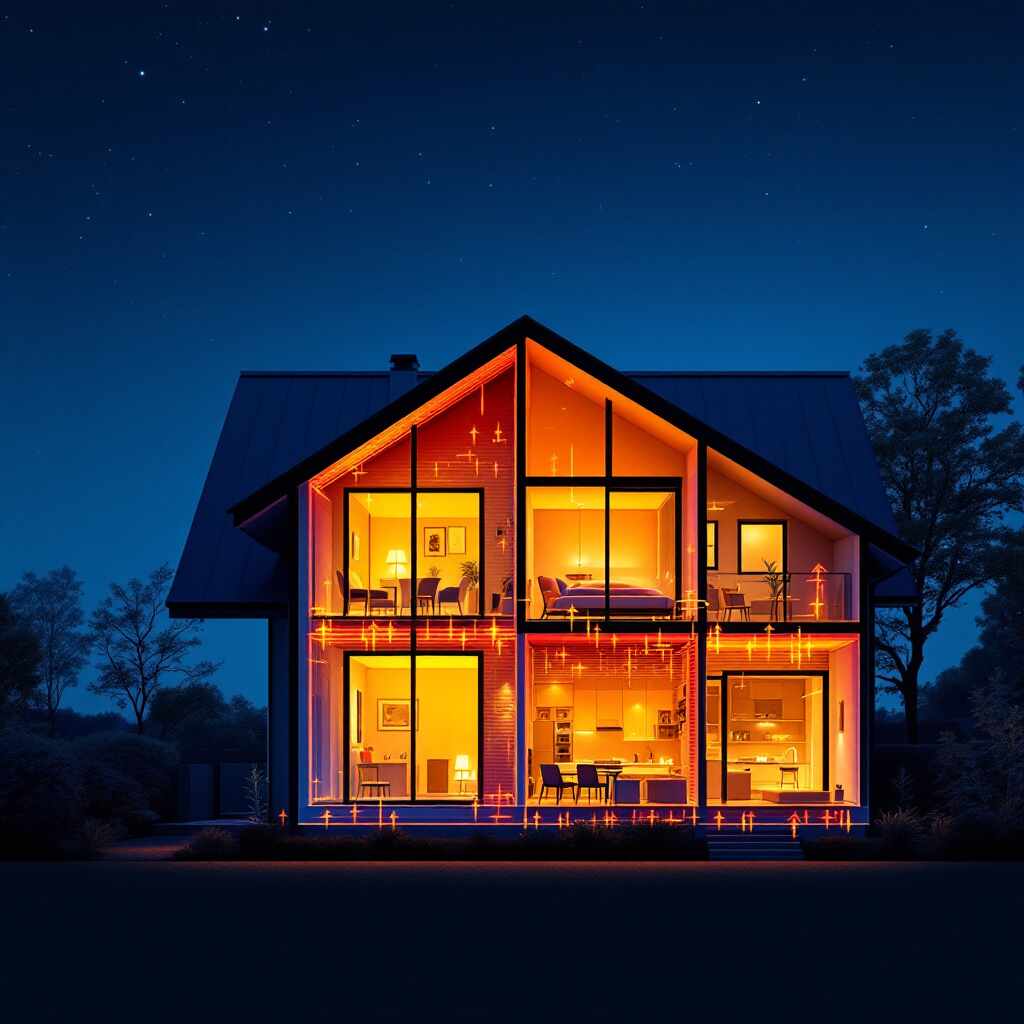
Let’s explore the main factors contributing to nighttime heat buildup in your home:
You may also read (clean your house spiritually).
Heat Accumulation During the Day
- Sunlight Exposure: During the day, sunlight heats roofs, walls, and windows, and these surfaces absorb and store heat. At night, they release this stored heat into the home.
- Thermal Mass: Materials like brick or concrete have high thermal mass, meaning they can hold heat for longer. This is why homes made of such materials often feel warmer at night.
Poor Insulation and Air Leakage
- Inadequate Insulation: Homes with insufficient insulation allow heat to penetrate and linger indoors. Spaces like attics, walls, and floors are common culprits.
- Air Leaks: Gaps around doors, windows, and attic hatches let warm air seep in and cool air escape, making it harder to regulate indoor temperatures.
Roof and Attic Heat Retention
- Roof Absorption: Roofs absorb intense solar radiation throughout the day, and attics act as heat reservoirs, slowly releasing heat into the living spaces below.
- Insufficient Ventilation: Poor attic ventilation traps heat, causing it to radiate into the rest of your home at night.
Sunlight Exposure and Window Placement
- South- and West-Facing Windows: These windows receive the most direct sunlight in the afternoon, increasing heat gain.
- Lack of Shading: Without proper shading or window treatments, windows become a major source of heat buildup.
Ventilation Issues and Airflow Problems
- Stagnant Air: Poor cross-ventilation prevents cool air from circulating through your home.
- Blocked Vents: Closed doors, obstructed vents, or malfunctioning HVAC systems can trap heat indoors.
Internal Heat Sources
- Appliances and Electronics: Devices like ovens, stoves, and computers generate heat, especially in the evening.
- Human Activity: The heat and humidity from cooking, laundry, and even occupying a room can raise the temperature.
Structural Design and Building Orientation
- Architectural Design: Features like large glass surfaces or flat roofs can trap heat.
- Building Orientation: How your home is positioned relative to the sun affects how much heat it absorbs during the day.
How Nighttime Weather and Climate Affect Indoor Heat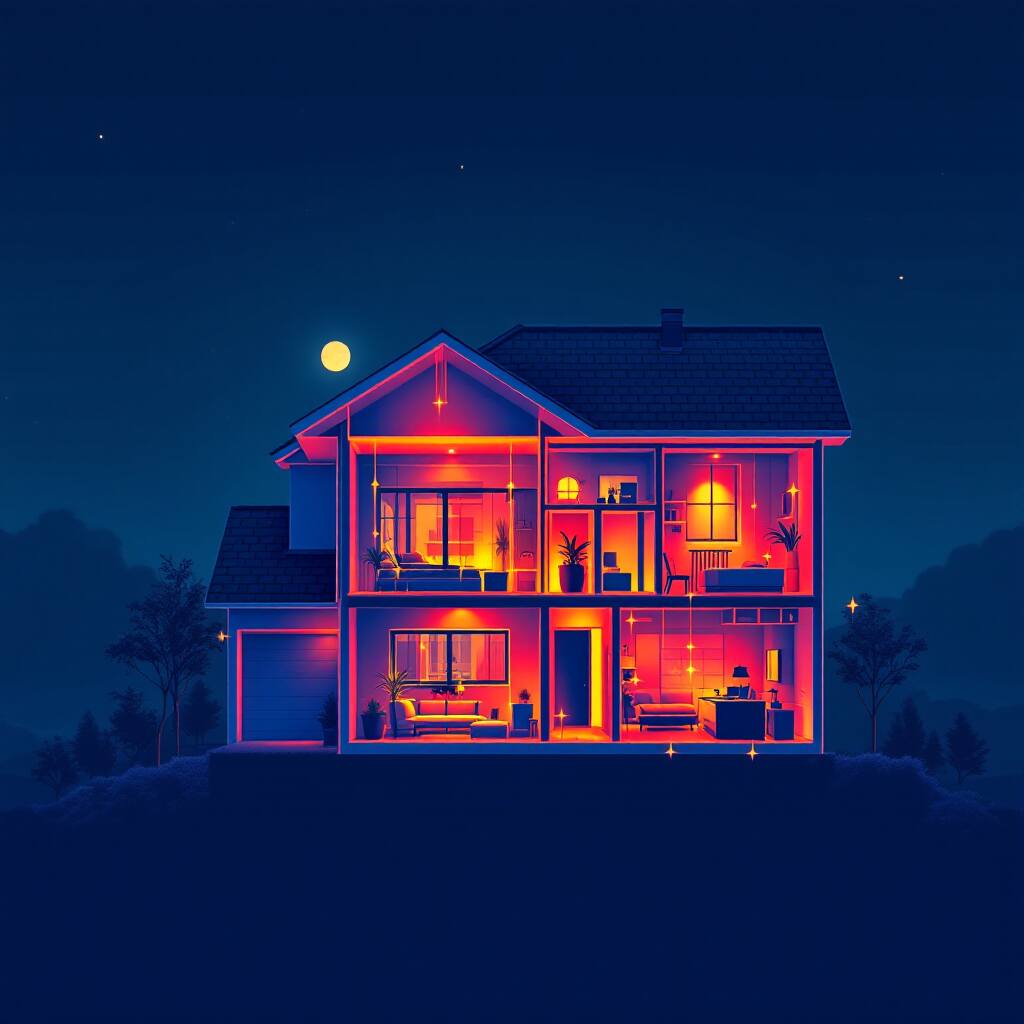
Warm, Humid Nights vs. Cool, Dry Nights
In humid climates, the air holds more moisture, which makes it harder for your home to cool down at night. On the other hand, dry climates tend to cool more quickly because the air has less moisture to retain heat.
Urban Heat Island Effect
If you live in a city, you might notice that homes stay warmer at night due to the urban heat island effect. Concrete, asphalt, and other materials in urban areas absorb and retain heat, keeping the surrounding air warmer.
Diagnosing Your Home: Signs and Symptoms
Do you want to know if your home suffers from nighttime heat retention? Here are some common signs:
- Room-to-Room Temperature Differences: Certain rooms (like upstairs bedrooms) feel significantly warmer than others.
- Hot Spots: Spaces like attics, west-facing windows, or poorly insulated walls are hotter.
- Rising Energy Bills: If your air conditioning runs all night, it’s a sign your home isn’t cooling efficiently.
Solutions: How to Prevent Your House From Getting Hot at Night
Improve Insulation and Seal Air Leaks
- Upgrade Insulation: Add insulation to attics, walls, and floors to prevent heat transfer.
- Seal Gaps: Use weatherstripping and caulking to block air leaks around windows and doors.
Enhance Roof and Attic Ventilation
- Install Attic Fans: These fans help expel hot air from your attic.
- Use Radiant Barriers: Reflective materials in the attic can reduce heat absorption.
Optimize Windows and Shading
- Blackout Curtains: Keep out sunlight during the day.
- Plant Trees: Shade trees can block direct sunlight from hitting your home.
- Reflective Window Films: Reduce heat gain through windows.
Boost Nighttime Ventilation
- Cross-Ventilation: Open windows on opposite sides of the house to create airflow.
- Ceiling and Exhaust Fans: Fans can help move warm air out and bring cooler air in.
Reduce Internal Heat Generation
- Switch to LED Bulbs: They emit less heat than traditional bulbs.
- Limit Appliance Use: Avoid running ovens or dryers in the evening.
Smart Home Strategies
- Programmable Thermostats: Schedule cooling cycles for maximum efficiency.
- Smart Blinds: Automatically adjust to block sunlight during the day.
Special Considerations for Different Home Types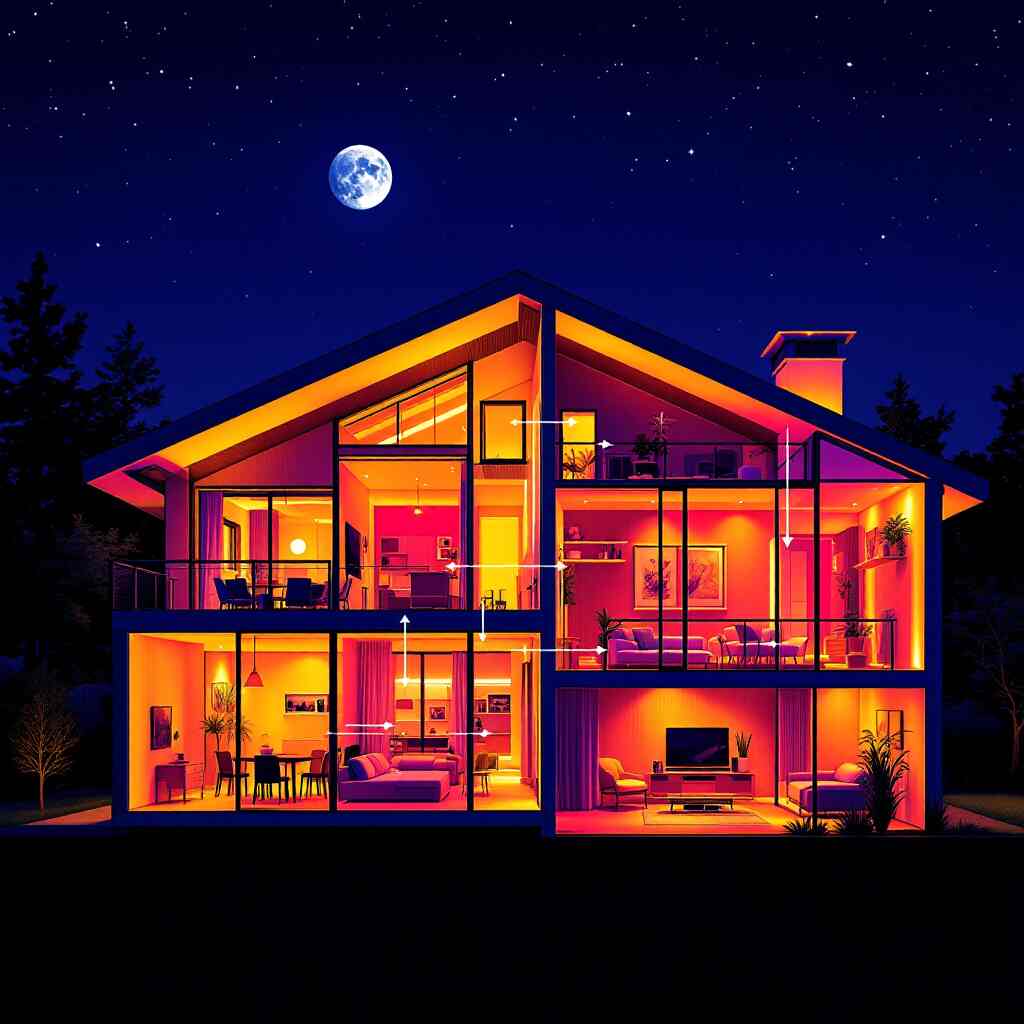
Apartments and Multi-Story Homes
- Heat Rises: Upper floors tend to be warmer due to rising heat.
- Cooling Tips: Use portable AC units or fans in upstairs bedrooms.
Older Homes vs. New Builds
- Older Homes: Lack of modern insulation and energy-efficient designs.
- New Builds: Often include better ventilation and energy-saving features.

